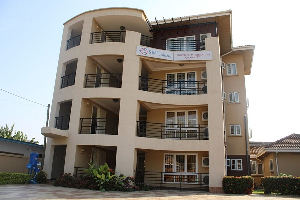Health News of Wednesday, 27 May 2009
Source: GNA
Iodine Deficiency Disorders incidence drop in Jirapa, Bongo
Wa, May 27, GNA - There has been significant improvement in the total goitre rates in Jirapa District in the Upper West Region and Bongo in the Upper East Region, a Biological Impact Assessment Study on Salt Iodization Programme in Ghana has revealed. The study showed that the Jirapa District, which was said to have the highest prevalence rate of iodine deficiency disorders, recording 56.4 percent of an overall total goitre rate in 1994, has now dropped to 10.6 percent in 2007.
For Bongo District, total goitre rate fell from 56.5 percent to 18.2 percent between 1994 and 2007. These were made known at a research dissemination seminar on Iodine Deficiency Disorders (IDD) in Wa on Tuesday to inform stakeholders about the degree of endemicity of IDD among the people and measures needed to be taken to control it.
The research attributed the improvements to the distribution of iodized oil capsules in the two districts in 1994 and 1995, followed by the marketing of iodized salt in the districts after 1996 The study showed that while there had been a drop in an overall total goitre rates in the two districts, median urine iodine rose from severe iodine deficiency of 1.9ug/L to 51.6ug/L for Jirapa and from 3.4ug/L to 62.5ug/Lfor Bongo between 1994 and 2007. Both districts have median urine iodine levels below the satisfactory threshold of less than 100 ug/L. It can therefore be said that Jirapa and Bongo districts are still iodine deficient and efforts should be made to ensure that adequately iodized salt is made accessible to the people, the study said. The study recommended that the iodine requirements of a population should be not less than 15 parts per million (ppm) of iodine in salt at the household level, assuming an average salt intake of 10g per capita/day.
The Ghana Standard mandates that iodine content in the salt should not be less than 50 ppm at the production point and it is expected to be at 25 ppm at the retail level. The research indicated that household consumption of iodized salt, which is adequately iodized and inadequately iodized salt, was found to be quite high in both districts with 82.1 per cent and 72.5 percent of households in Jirapa and Bongo respectively were using iodized salt. However, only 38.5 percent of households in Jirapa and 36.3 percent of households in Bongo districts were using adequately iodized salt. A country is certified to have achieved the universal salt iodization goal if at least 90 per cent of households are consuming adequately iodized salt, the study said.
Opinions









